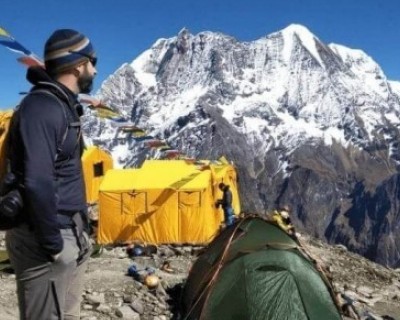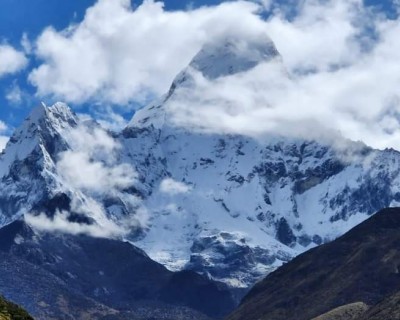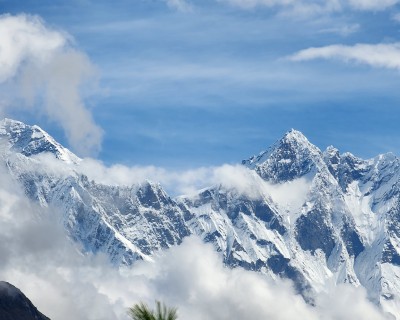Searching for the best trekking destination in the globe and tired? Don't worry here I have come with the solution to this problems so, Stop searching.
Probably, the simple word Nepal may not cross your mind while searching for the best country to trek but let me remind you of ignoring the same things can give you the big loss in life.
Nepal, with the eight of the top ten highest summits in the world and the most beautiful landscapes which only reachable on the foot, trekking in Nepal is one of the most beautiful experiences in the globe. Trekking is the popular outdoor activities in Nepal and you will see the travellers on the street of the Kathmandu and trekking hub, Pokhara with friendly guides, as well as organized tours and gears for sales and also rent. Nepal offers many outdoor activities like trekking, touring, hiking, climbing peaks, mountain biking, bungee jumping, rafting, paragliding and many more. It means the huge variety of options allows for the people with the different ages and the capabilities to trek in the country.
Now you might be thinking that " umm I need more time to make a planning an expedition to the wild and lofty places that few dare to attempt, I should spend more times to know about the trekking, that I am planning to trek?
Then don't think too much, after you arrive in Kathmandu with no plans, your agency and some expert guide will help you to get the solution to your problems.Despite this, trekking in Nepal is not exactly wandering alone through an uncharted wilderness of nature in Nepal. You will walk through the well-marked paths, with your expert guide crossing through the dense forest covered with the colorful blooms rhododendrons, walking through the scattered villages of the Gurung, Magar peoples. The regularly-spaced villages and the teahouses allow the trekkers the good opportunity to rest and explore either for the few minutes of overnight. The age-strong culture and the friendliness of the Nepalese people can blow your minds.
Trekking in Nepal is not simply meant to hike to the hills, to enjoy the hike and seek with the mountains and return back but trekking in Nepal means getting to know more about the naïve peoples, their culture, tradition, unique flora and fauna of the regions, enjoying the thrilling adventure walking in the most remote area of the globes and many more.
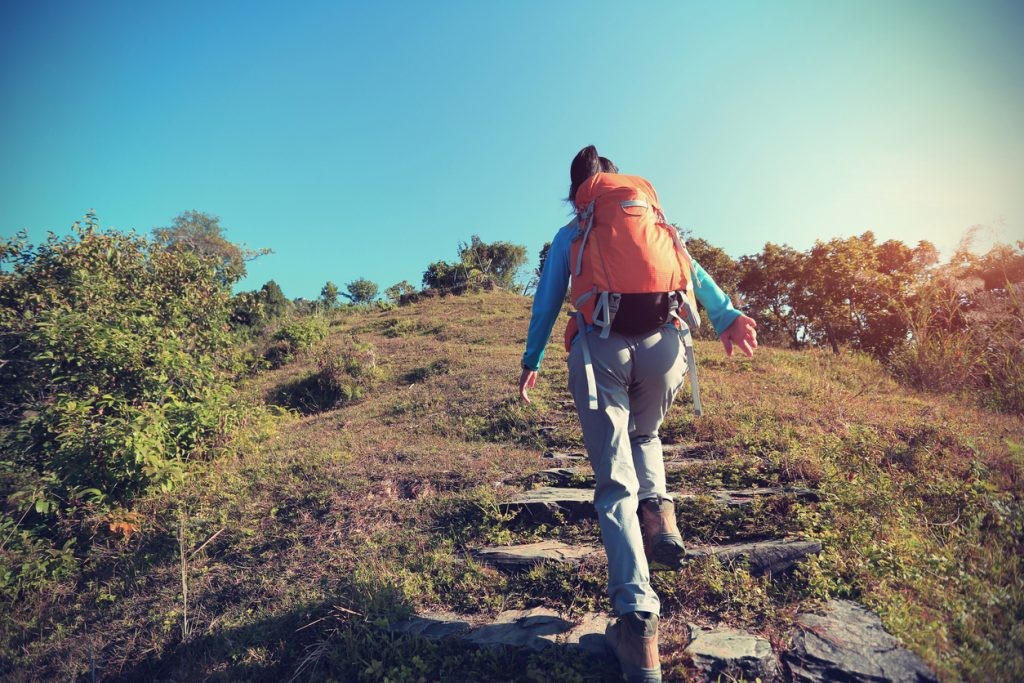
.jpg)
Things to know before trekking in Nepal
Best time to trek
The facts that you can trek in any season in Nepal, but the best time will depend upon your tolerance on the weather like how cold, cold, windy you can bear, how high you can walk, and your tolerance of the crowds also your physical and mental health and so on.
The best time to trek in the high altitude is in the dry and warm weather like in the months of March-June and September to November. During these times, the temperature is very bearable, the weather is very pleasant, skies are usually clear throughout the days, although the skies are quite foggier and the rain begins in the months of May and June. It is also possible to trek out of the season but be strong to face some difficulties, like expect the rain and leeches and slippery trail during the summer moons season and extreme freezing cold and closed passes during the winter months. During the monsoon season, the trail is quite empty, rain usually occurs during the night times and the day is very clear, it's also the best time to trek in the north sides of the Himalayas because it lies in the rain shadow, that the mountains somewhat block the rains, the skies are still cloudy but give the best views. Best for those who want to have the thrilling adventure experience.
Trekking in Nepal is possible throughout the year as every month has its own merits and demerit so it's all about your balance, performances and activities. Let me explain it more in detail to help you to choose the best season to trek in Nepal.
Generally, there are four seasons with their attraction, pros and cons.
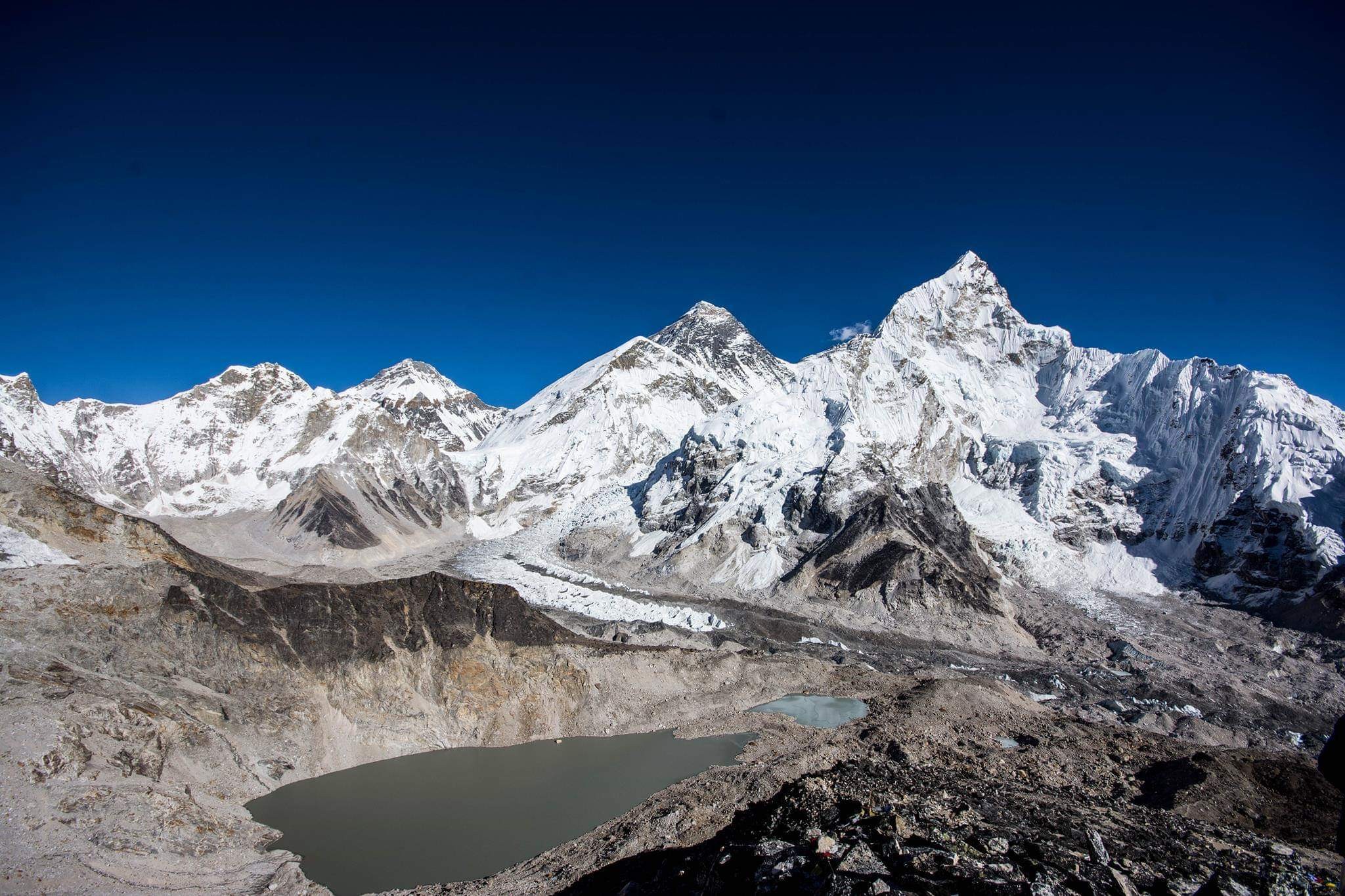
Spring season
Spring season is the collection of the months of March, April and May. Spring season is known as the best season to trek around Nepal because the temperature in the high and low altitude is very bearable, the weather is very pleasant, you will get to see the changes in the color of the landscapes according to the altitudes, forest from the brown to the green makes the trekking in the high altitude very beautiful, attractive, relaxed and breathtaking.
Trekking in this season expect to experience the average temperature in the lower mountains region from 16C to 23 C. trekking in the early march, you will get to see the ice melting in the high altitude as the winter just fade and the month of May is quite warmest moths and also bring the clouds and light showers as the monsoon are quite near.
It is quite warm in the lower altitude and moderates at the high altitude over the 4000 meters offers the stunning views of the snow-capped mountains, get to experience the light snow-shower at the months of the march and light rain shower in the month of may cause they are pretty much near with winter and monsoon months. Due to the warm temperature and pleasant stable weather, you will see all the popular trekking trails are very popular and the teahouse and the lodge are all most booked in advance. It is also a popular time to trek, the famous trekking trail of the Everest Region such as Everest Base Camp Trek, Annapurna Base Camp Trek, Langtang Region Trekking, Everest Gokyo lake trekking, Everest Three passes trekking.
But if you are searching for the less busy trekking during this season, then you can trek Mardi Himal Trek, Kopra Ridge Trek.
Monsoon season
Monsoon season is also known as the summer season; the month of the June, July and August month falls in this season. Monsoon season is one of the off-season trekking in Nepal because this month comes with the high temperature and uncomfortable weather conditions. It’s difficult to see the clear views of the snowy-peaks, high mountains region are often covered in the cloud and the lower region is very slippery and muddy. Trekking in this season, you can expect the leeches and the bugs in the lower altitude to obstacles you during the walk, besides, you can still see the glory of the Himalayan.
Due to the geographical diversity, some region lies in the rainy season so it is the best time to trek in that area. The Manang and Dolph region of Nepal lies in the rain shadow region so summer season is best times to trek in this region. Rain probability occurs during the night times and resulting in the clear morning scenery gives you the chance to enjoy the clear and beautiful views of the waterfalls with fresh environments.
Monsoon season is best for those who want to add the thrilling and risky experience while trekking in high altitude, also bet times for those who love photography. The rain washes all the dust and gives you a clear and fresh environment views, perfect times to capture the natural beauty of Nepal.
Autumn season
The busiest and the crowded season of the years, the months of September, October and November fall in this season. Autumn season is the peak season to trek in Nepal due to the pleasant weather and warm temperature. The weather is very stable and the temperature is also quite comfortable. Sometimes you will experience the hot temperature lower the 3000 meters; there is a high possibility of showering in early September. Expect trekking in the temperature of 15 C to 25 C in the lower mountain ranges and from 20 C to – 100 C in the high altitude.
Autumn season is considered the most favorable time to trekking Nepal because of the clear weather and views. You can enjoy both the warm and the cool temperature with clear crystal views of the snow-capped mountains, due to this the trekking trails are crowded so you can expect to pay the slightly more in everything compared to trekking in another season. Most of the teahouses and lodge will be already full which will make little challenging to trek in the high altitude.
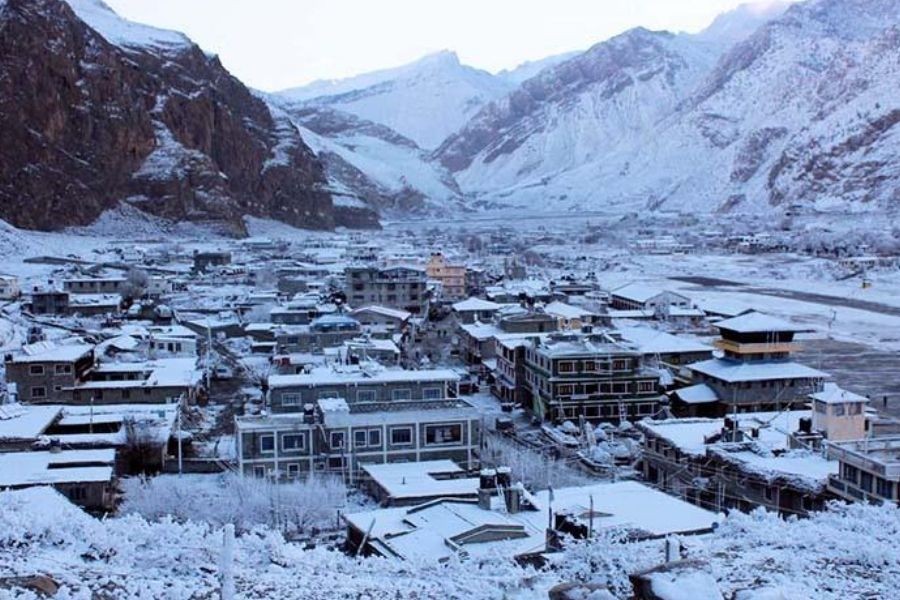
Winter seasons
The month of December, January and February falls in the winter season, the days tend to be shorter and nights to be longer. There is loss of the snow, so this season is not recommended for trekking in the high altitude as it brings more difficulty and challenging.
The weather is very dry and fairly stable, so it is possible to trek, Everest, Base Camp Trek, if you are the extreme adventure lovers, are wants to experience quite different than you usually did like bit risky, thrilling experience. If you are planning to trek in winter season then expect the average temperature from -20 C to -30 C.
Due to the continuously snowing, the trekking routes are disappeared and the high passes are closed due to the high snow-level, very difficult to find the open teahouse and lodges because the people living in the high altitude migrate to the lower attitude so you might have to spend overnight in the tent in high altitude. The coolness of the temperature and weather depends upon how high your trek if you trek in lower altitude then the temperature remains moderate but it will be frozen in the high altitude. If the coldness does not bother you and you can bear it then it's the best time to trek cause you will see the fewer visitors, quite an empty trial, so it’s best for those who want to avoid the crowds.
If you are planning to trek in high altitude then remember to trek a professional guide to guide.
Things to pack before trekking in Nepal
Packing the right and needed amounts of gear also affect your trekking, sometimes packing the more and less amount of great lead you to face the difficulty. So keep in the mind that trekking in the long trekking route like Everest Base Camp, Gokyo Lake Trekking, Annapurna Circuit trekking need the little more gear compared to the short trekking trails like Ghorepani Poon Hill Trek, so before packing your things first discover the length of your days. Then include the basic equipment I have listed below:
Travelling bags
• Duffer bags
• Day packs
• Ruck bags with waterproof covers
Clothing
Upper body
• T-shirts
• Thermal Vest
• Lightweight thermal tops
• Waterproof jackets
• Fleece Jackets or Pullover
• Women sports bra and Synthetic
Lower body
• Hiking sorts
• Fleece pants
• Waterproof shell pants
• Undergarments
• Lightweight walking pants
Footwear
• Inner socks
• Thick woolen socks
• Hiking boots
• Camp sandals
• Walking poles
Hand wear
• Lightweight fleece gloves
• Thick, heavyweight gloves
• Water/ windproof gloves
Heads
• Woolen Hats
• Sun Hats
• Sunglasses
• Scarf
Sleeping accessories
• Sleeping bags
• Pillowcase and other night required accessories
Other personal equipment
• Sunscreen
• Waters bottles
• Water purifiers
• Head touch
• First Aids kid
• Hand sanitizers
• Towel
Experience and fitness
While trekking in Nepal, there are some treks which required the wide ranges of the experience and physical fitness. If you are searching for the uphill hike for a few hours to play hide and seek with the mountains, walk through the dense hills covered with the blooms rhododendrons then it doesn't need experience, any trek with the Nepali guide and porter and good accommodation is quite attainable for all who is pretty fit and fine. It is better to have some experience is walking and hiking in the medium-altitude to adjust in the atmosphere pressure, doing the exercises like cycling, swimming, to increase the strength, hiking around 2-3 hours in the uphill’s and down hills can help you to trek in the high altitude. Besides its not compulsory to have the previous experience in altitude, if you are first trekkers in the Himalayan also you can complete the trek very peacefully just be mentally and physically fit.
Guide or Independent treks
While planning the trek, Where to go with guide or solo?
This question may cross your mind. Let me answer this, whether to join an organized group or to go solo to hire your own porter or guide is the personal decision which is based on the difficulty of the trek and the budget.
If you have trekked more than once and pretty familiar, with the Nepali route, culture, a tradition than its okay to go solo trip but if you are first visitors to Nepal then it's better to join an organized or hire your own guide and porter, cause you are first-time visitors it means you don't know about the route, the problems likely to face during the hike, Nepali culture and traditions, their common languages so to guide in this you need to hire a guide, to have peaceful hiking in the mountains.
Trekking through the agency, they will prepare you all the necessary documents for the trekking so your role here is to walk through the direction they show so you may not face the problems while trekking but independent trekking means you yourself have to apply all the documents by your own, means you will face the problems related to this.
So to be out of the problem it's better to have someone by your sides to help to complete in this all.
Required permits
While searching more about the region you’re trekking in, you also have to know where the region is restricted for the visitors or not? Do we have to make permit to enter the region? And so on. In the high altitude, police checkpoint is numerous and unavoidable and they can check your permits anytime while entering in parks and other regions, could fine you of double the normal cost if you are caught without the permits you need. It's better not to bribe officers or police personnel as it might get you in trouble. Most of the area and time you need two to three permits, where one belongs to the conservation area or national parks, another is trekker’s information management system (TIMS) Card and the lost one is to enter in the restricted area permit. It's compulsory to have the first two one but the third one is only necessary for some area.
If you want to know more about Nepal, its trekking region, culture and tradition then please contact us: [email protected].



.jpg)


